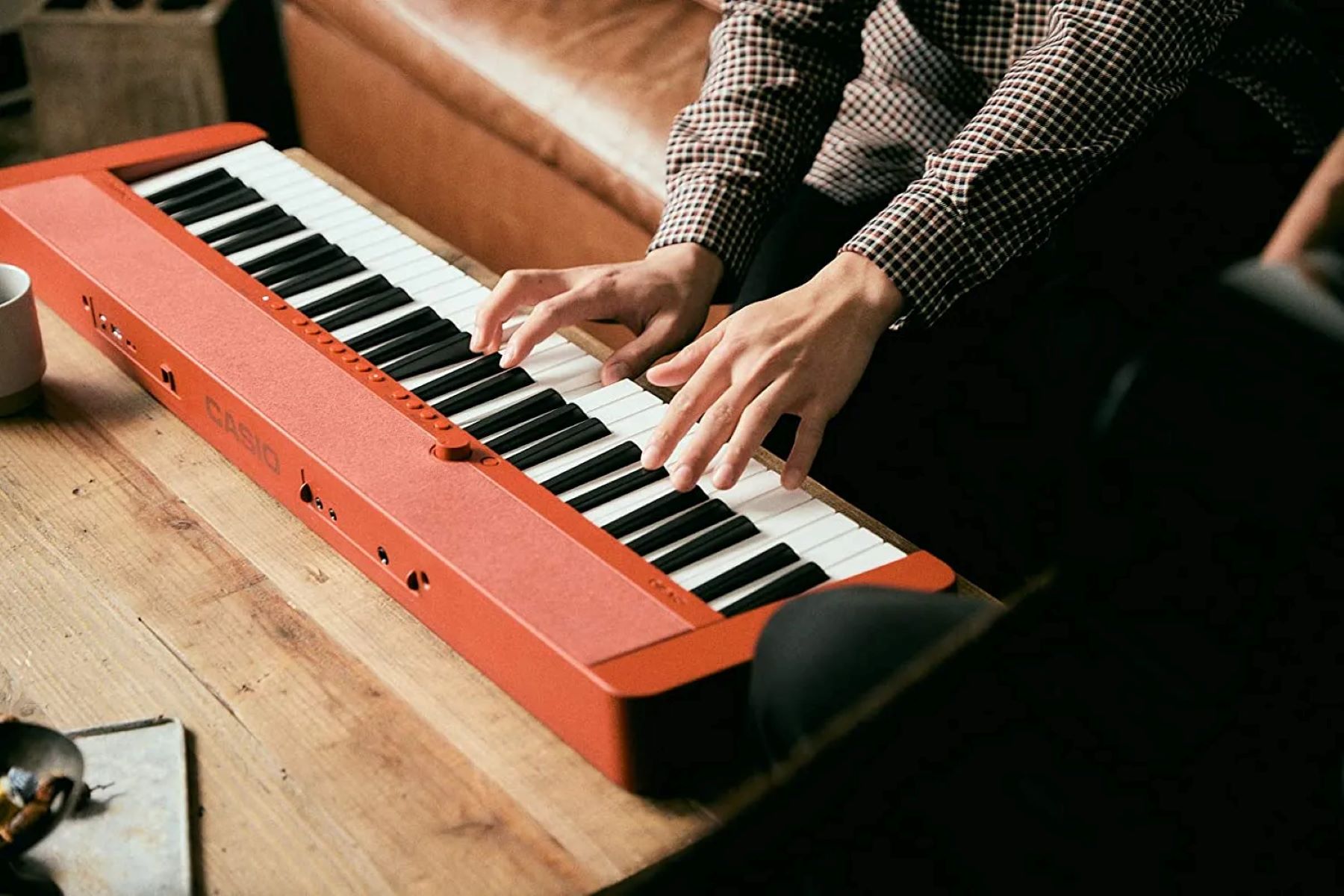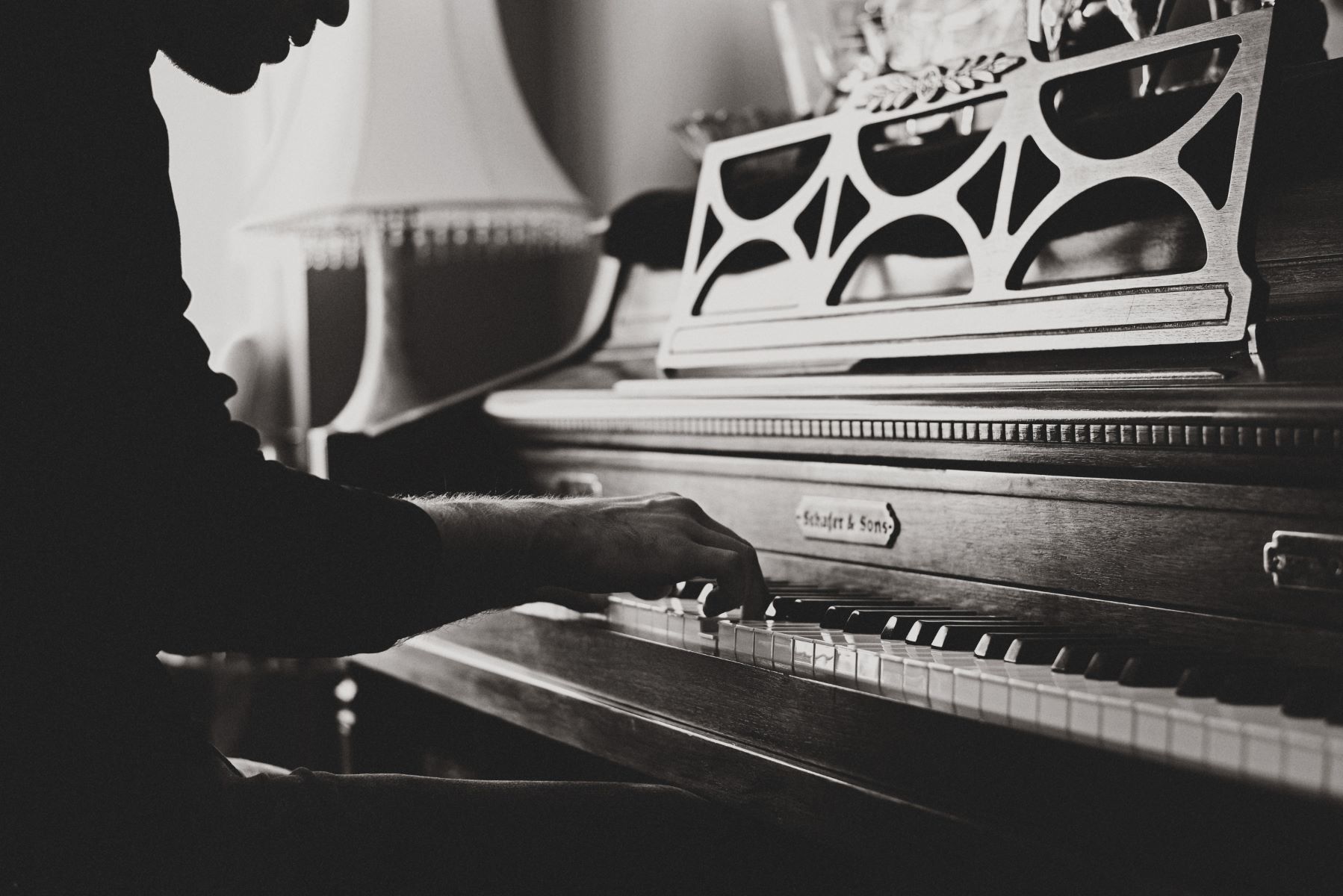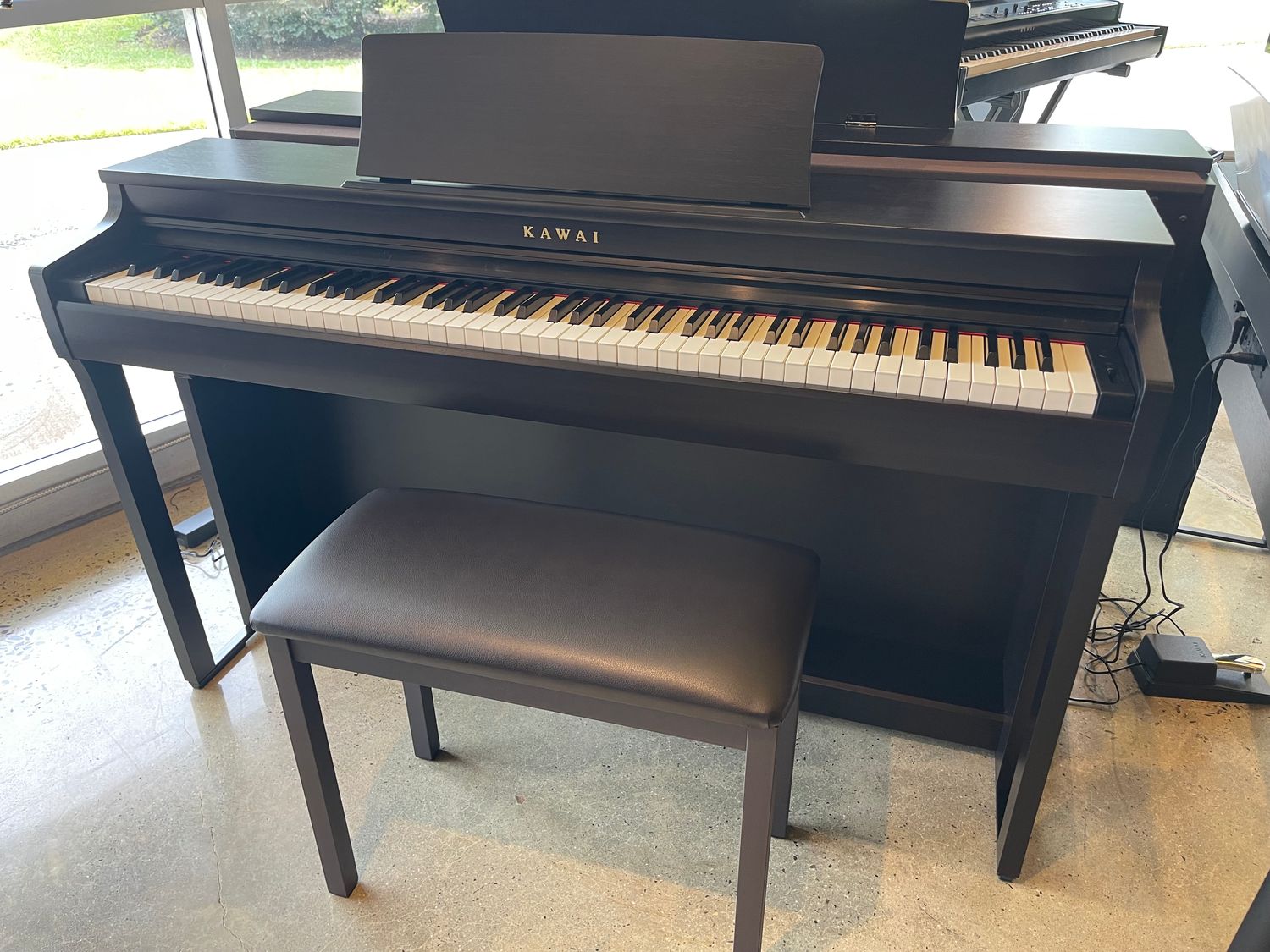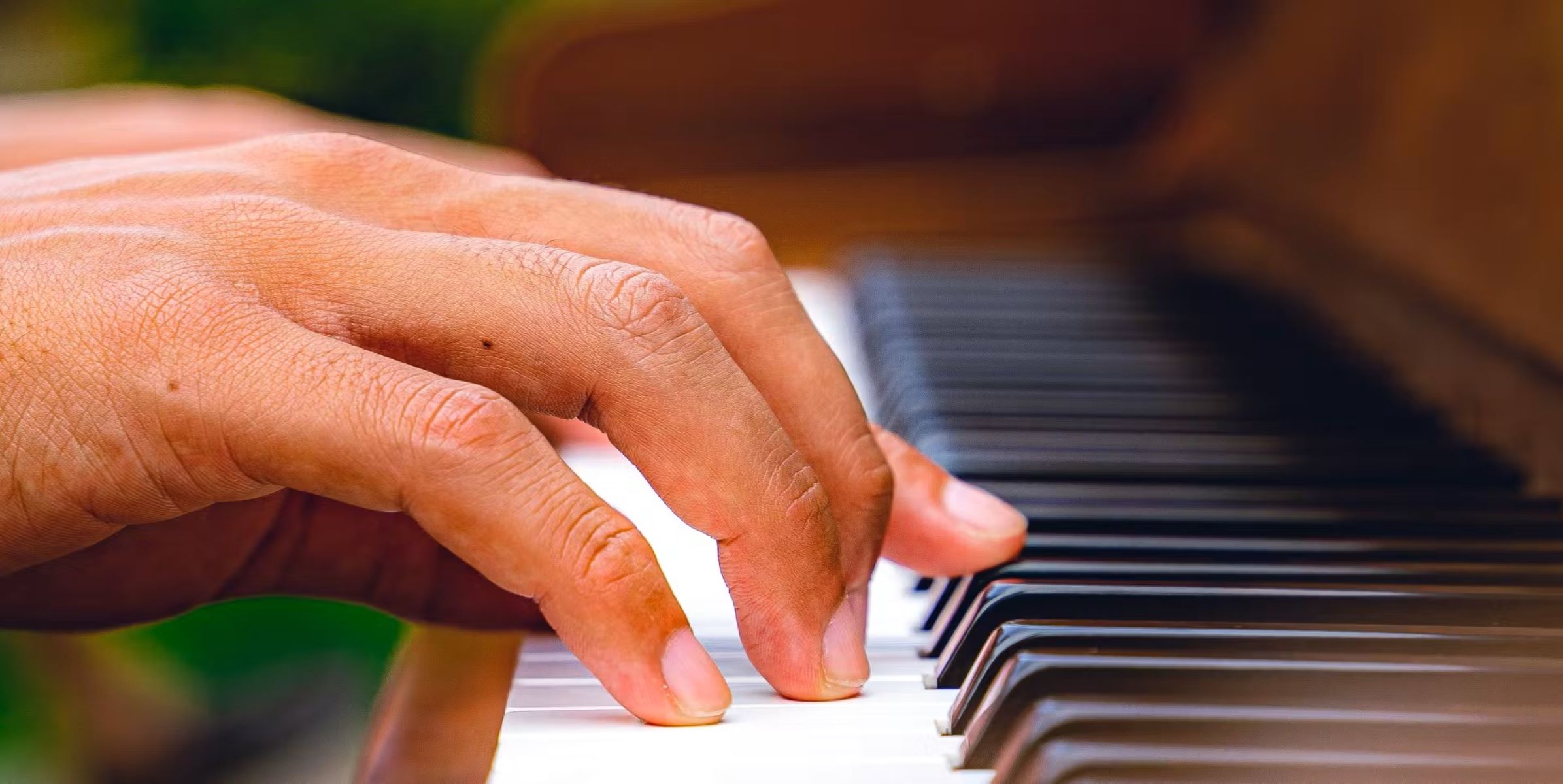Home>Instruments>Piano>What Is The Suzuki Piano Method
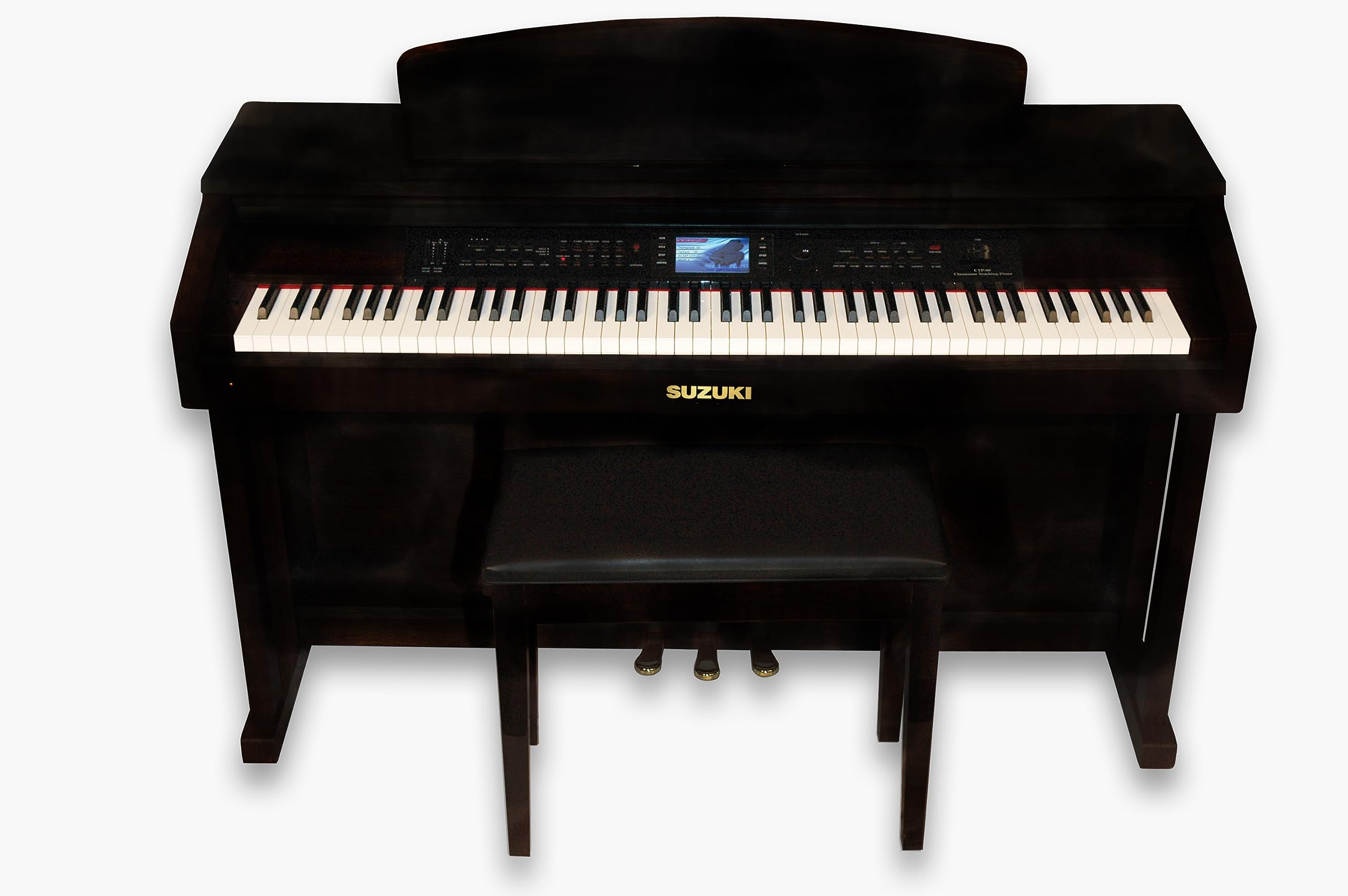

Piano
What Is The Suzuki Piano Method
Published: February 11, 2024
Discover the Suzuki Piano Method, a renowned approach to learning piano that emphasizes listening, repetition, and parental involvement. Learn about the benefits and principles of this innovative teaching method.
(Many of the links in this article redirect to a specific reviewed product. Your purchase of these products through affiliate links helps to generate commission for AudioLover.com, at no extra cost. Learn more)
Table of Contents
Introduction
The Suzuki Piano Method, also known as the Suzuki Method, is a renowned approach to music education that has gained global recognition for its unique philosophy and teaching techniques. Developed by Dr. Shinichi Suzuki, a Japanese violinist, and educator, this method is rooted in the belief that every child has the potential to develop musical ability through a nurturing and supportive environment. While initially designed for violin instruction, the Suzuki Method has been successfully adapted for various instruments, including the piano.
The Suzuki Piano Method is distinguished by its emphasis on early childhood education and the concept of talent development through immersion in a rich musical environment. Unlike traditional teaching methods, the Suzuki approach advocates for a holistic musical experience that integrates learning music with language acquisition, parental involvement, and a strong sense of community. By immersing students in an environment where music is an integral part of daily life, the Suzuki Method aims to cultivate not only musical skills but also character development and a lifelong love for music.
Central to the Suzuki philosophy is the notion that musical ability can be nurtured in all children, regardless of their natural aptitude. This inclusive approach has made the Suzuki Piano Method a popular choice for parents seeking a comprehensive and nurturing music education for their children. As we delve deeper into the history, principles, and practical aspects of the Suzuki Piano Method, it becomes evident that this approach has significantly influenced the landscape of music education worldwide.
History of the Suzuki Piano Method
The roots of the Suzuki Piano Method can be traced back to the innovative pedagogical insights of Dr. Shinichi Suzuki, who revolutionized music education with his pioneering approach. Dr. Suzuki, a visionary violinist and educator, developed the Suzuki Method in the mid-20th century based on his observations of how children effortlessly acquire their native language. Inspired by the idea that musical ability could be cultivated in a similar manner, Dr. Suzuki sought to create a nurturing and immersive learning environment for young musicians.
Initially focusing on violin instruction, Dr. Suzuki’s method gained widespread acclaim for its success in nurturing young musicians with exceptional proficiency and a deep love for music. As the method gained momentum, it was adapted for various instruments, including the piano, to cater to a broader spectrum of aspiring musicians. The principles and techniques of the Suzuki Method were gradually refined and expanded to encompass the unique challenges and opportunities presented by piano instruction.
One of the key milestones in the history of the Suzuki Piano Method was the establishment of the Talent Education Research Institute in Matsumoto, Japan, which served as a hub for developing and disseminating Dr. Suzuki’s educational philosophy and methodologies. This institute became a focal point for training Suzuki teachers and refining the curriculum to ensure the highest standards of music education. The growing international interest in the Suzuki Method led to the establishment of Suzuki associations and teacher training programs worldwide, further solidifying the method’s global influence.
Today, the Suzuki Piano Method stands as a testament to Dr. Suzuki’s enduring legacy, embodying his profound belief in the unlimited potential of every child to develop musical ability. The method’s evolution from its origins in violin pedagogy to its adaptation for piano instruction reflects its adaptability and enduring relevance in the realm of music education. As we explore the philosophy and principles underlying the Suzuki Piano Method, it becomes clear that its historical trajectory has shaped a paradigm-shifting approach to nurturing musical talent in young learners.
Philosophy and Principles of the Suzuki Piano Method
At the heart of the Suzuki Piano Method lies a profound philosophy that celebrates the potential for musical development in every child. Central to this philosophy is the belief that musical ability is not an inborn talent but an acquired skill that can be cultivated through a nurturing and supportive environment. Dr. Shinichi Suzuki’s approach is deeply rooted in the concept of talent development through immersion, echoing the natural process of language acquisition in early childhood.
The Suzuki Method emphasizes the importance of creating a rich musical environment that fosters a love for music from an early age. Through listening, repetition, and positive reinforcement, students are encouraged to develop their musical abilities in a manner that parallels the way they learn their native language. This immersive approach not only cultivates technical proficiency but also instills a deep appreciation for music and a strong sense of musical expression.
Central to the Suzuki philosophy is the concept of the “Suzuki Triangle,” which forms the dynamic relationship between the student, the parent, and the teacher. This triangular partnership is essential to the success of the method, as it ensures a collaborative and supportive learning experience. Parents play a pivotal role in the Suzuki Method, serving as the “home teachers” who create a nurturing musical environment, actively participate in lessons, and provide ongoing encouragement and support for their child’s musical journey.
The principles of the Suzuki Piano Method extend beyond musical instruction to encompass character development and the nurturing of essential life skills. Through the study of music, students are encouraged to cultivate qualities such as perseverance, discipline, empathy, and confidence. The Suzuki Method places a strong emphasis on the development of the whole child, fostering not only musical talent but also a sense of community, respect, and joy in learning.
By embracing the philosophy and principles of the Suzuki Piano Method, students embark on a transformative musical journey that transcends technical proficiency, nurturing a lifelong love for music and instilling valuable life skills that extend far beyond the realm of music education.
The Role of the Suzuki Piano Teacher
In the Suzuki Piano Method, the role of the teacher extends far beyond traditional music instruction, encompassing a multifaceted and deeply nurturing approach to guiding young musicians. Suzuki teachers are not only mentors and educators but also facilitators of a holistic musical experience that fosters a lifelong love for music and nurtures the development of the whole child.
Central to the Suzuki teacher’s role is the cultivation of a nurturing and supportive learning environment that mirrors the natural process of language acquisition. By creating an atmosphere of encouragement, patience, and positive reinforcement, Suzuki teachers empower their students to develop musical abilities with joy and confidence. The teacher serves as a guide, demonstrating musical techniques and fostering a deep understanding of musical expression through attentive and personalized instruction.
One of the distinctive features of the Suzuki Piano Method is the active involvement of parents in the learning process. Suzuki teachers work closely with parents, providing guidance and support to help them serve as effective “home teachers” who create a musical environment at home, actively participate in practice sessions, and reinforce the lessons learned during formal instruction. This collaborative partnership between the teacher, the student, and the parent forms the cornerstone of the Suzuki Method, ensuring a cohesive and supportive approach to musical education.
Furthermore, Suzuki teachers play a pivotal role in nurturing not only musical proficiency but also character development and life skills. Through their mentorship, teachers instill qualities such as discipline, perseverance, empathy, and respect in their students, fostering a holistic approach to education that extends beyond technical mastery of the piano. By embodying the principles of the Suzuki Method and serving as role models for their students, Suzuki teachers inspire a deep love for music and cultivate a sense of community and joy in learning.
Ultimately, the role of the Suzuki Piano teacher transcends traditional music instruction, embodying a profound commitment to nurturing the musical, emotional, and intellectual growth of their students. Through their dedication and guidance, Suzuki teachers empower young musicians to embark on a transformative musical journey that extends far beyond the realm of piano proficiency, shaping their character and instilling a lifelong passion for music.
The Suzuki Piano Repertoire
The Suzuki Piano Method features a carefully curated repertoire that reflects the method’s commitment to nurturing musical development through a progressive and engaging selection of pieces. The repertoire encompasses a diverse range of musical styles, from classical masterpieces to traditional folk tunes, providing students with a rich and varied musical experience that fosters technical proficiency and artistic expression.
One of the defining characteristics of the Suzuki Piano repertoire is its emphasis on ear training and memorization. Students are encouraged to learn pieces by ear, listening to recordings of the music and internalizing the melodies and phrasing before delving into the technical aspects of the score. This immersive approach not only develops a strong foundation in musical memory and ear training but also fosters a deep understanding of musical expression and interpretation.
The Suzuki Piano repertoire is thoughtfully structured to provide a progressive learning experience, allowing students to build upon their skills and musical understanding as they advance through the pieces. Beginning with simple, melodious tunes, students gradually progress to more complex and challenging works, honing their technical abilities and musical sensitivity along the way. The repertoire encompasses a balance of classical compositions by renowned composers and engaging folk songs that celebrate diverse musical traditions.
Furthermore, the Suzuki Piano repertoire serves as a vehicle for developing a deep appreciation for musical expression and artistry. Students are encouraged to imbue each piece with their unique interpretation, fostering a sense of creativity and individuality in their musical performances. By engaging with a diverse array of musical styles and genres, students develop a well-rounded musical sensibility that transcends technical proficiency, nurturing a lifelong love for music and a broad understanding of musical expression.
Ultimately, the Suzuki Piano repertoire embodies the method’s commitment to fostering a comprehensive and enriching musical education. Through a thoughtfully curated selection of pieces that emphasize ear training, musical expression, and progressive skill development, the repertoire serves as a cornerstone of the Suzuki Method, nurturing students’ musical abilities and instilling a deep love for music that extends far beyond technical proficiency.
The Suzuki Piano Method and Parental Involvement
Central to the Suzuki Piano Method is the integral role of parental involvement in the musical education of young students. Unlike traditional music instruction approaches, the Suzuki Method places a strong emphasis on the active participation of parents, recognizing them as essential partners in creating a nurturing and supportive musical environment for their children.
Parents are encouraged to take on the role of “home teachers,” actively engaging in their child’s musical journey by creating a conducive practice environment at home, participating in practice sessions, and providing ongoing encouragement and support. Through this active involvement, parents play a pivotal role in reinforcing the lessons learned during formal instruction, nurturing a sense of discipline, and instilling a deep love for music in their children.
Furthermore, parental involvement extends to creating a rich musical environment at home, where music becomes an integral part of daily life. By exposing their children to a diverse range of musical styles and encouraging active listening, parents contribute to the development of a deep appreciation for music and a keen sense of musical expression. This immersive approach mirrors the natural process of language acquisition, fostering a love for music from an early age.
Another vital aspect of parental involvement in the Suzuki Piano Method is the collaborative partnership between parents, students, and teachers. Parents work closely with Suzuki teachers, receiving guidance and support to effectively support their child’s musical development. This collaborative approach ensures a cohesive and nurturing learning experience, where the home environment aligns with the principles and methodologies employed during formal instruction.
Ultimately, the Suzuki Piano Method recognizes parental involvement as a cornerstone of the method’s success, fostering a strong bond between parents and their children through the shared experience of music education. By actively engaging in their child’s musical journey, parents not only contribute to the development of musical proficiency but also play a pivotal role in nurturing essential life skills and instilling a lifelong love for music that extends far beyond the realm of piano instruction.
Benefits and Criticisms of the Suzuki Piano Method
The Suzuki Piano Method has garnered widespread recognition for its numerous benefits, as well as facing certain criticisms that have sparked discussions within the music education community. Understanding these aspects provides a comprehensive perspective on the method’s impact and effectiveness.
Benefits
One of the primary benefits of the Suzuki Piano Method is its emphasis on early childhood music education. By introducing children to music at a young age, the method nurtures a deep love for music and facilitates the development of musical abilities alongside language acquisition and cognitive skills. The immersive approach to learning fosters a strong foundation in ear training, musical memory, and technical proficiency, empowering students to develop a lifelong passion for music.
Furthermore, the Suzuki Method’s focus on parental involvement creates a supportive and nurturing environment for young learners. This collaborative approach strengthens the bond between parents and children, fostering a shared musical journey that extends beyond formal instruction. The method’s holistic approach to music education, encompassing character development and life skills, equips students with valuable qualities such as discipline, perseverance, and empathy, shaping them into well-rounded individuals.
Criticisms
While the Suzuki Piano Method has garnered acclaim, it has also faced criticisms, particularly regarding the exclusive use of ear training and memorization in the early stages of instruction. Some critics argue that an overemphasis on these aspects may neglect the development of sight-reading skills, which are essential for a comprehensive musical education. Additionally, concerns have been raised about the potential for parental pressure and unrealistic expectations, which could impact the well-being of young students.
Another criticism pertains to the uniformity of the repertoire across students, which may limit exposure to a diverse range of musical styles and composers. Critics argue that a more varied repertoire could enrich students’ musical experiences and foster a broader understanding of music. Additionally, the method’s strict adherence to the Suzuki repertoire may be perceived as limiting students’ creative expression and individuality in their musical pursuits.
Despite these criticisms, the Suzuki Piano Method continues to be embraced by countless families and educators worldwide, owing to its profound impact on nurturing musical talent and instilling a lifelong love for music in young learners. By recognizing its benefits and addressing valid criticisms, the method continues to evolve, ensuring a comprehensive and enriching musical education for generations to come.
Conclusion
The Suzuki Piano Method stands as a testament to the transformative power of music education, embodying a profound philosophy and innovative approach that has revolutionized the way young musicians learn and engage with music. Rooted in the belief that every child has the potential to develop musical ability, the Suzuki Method has transcended traditional pedagogical approaches, nurturing not only technical proficiency but also a deep love for music and essential life skills.
Throughout its history, the Suzuki Piano Method has evolved into a comprehensive and holistic approach to music education, emphasizing the importance of early childhood immersion in a rich musical environment. By fostering a collaborative partnership between students, parents, and teachers, the method creates a nurturing and supportive learning experience that extends far beyond the realm of piano instruction, shaping the character and musical sensibilities of young learners.
While the method has received widespread acclaim for its numerous benefits, it has also faced valid criticisms that have sparked meaningful discussions within the music education community. By recognizing these criticisms and embracing ongoing evolution, the Suzuki Piano Method continues to adapt and refine its approach, ensuring a comprehensive and enriching musical education for future generations.
As we reflect on the philosophy, principles, and practical aspects of the Suzuki Piano Method, it becomes evident that its impact extends beyond musical proficiency, nurturing a sense of community, creativity, and joy in learning. The method’s enduring legacy serves as a beacon of inspiration, empowering young musicians to embark on a transformative musical journey that shapes their character and instills a lifelong passion for music.
In essence, the Suzuki Piano Method embodies the profound belief that music has the power to enrich lives, foster creativity, and cultivate a deep appreciation for beauty and expression. By embracing this philosophy and nurturing the musical potential of every child, the Suzuki Method continues to shape the landscape of music education, leaving an indelible mark on the hearts and minds of young musicians around the world.





